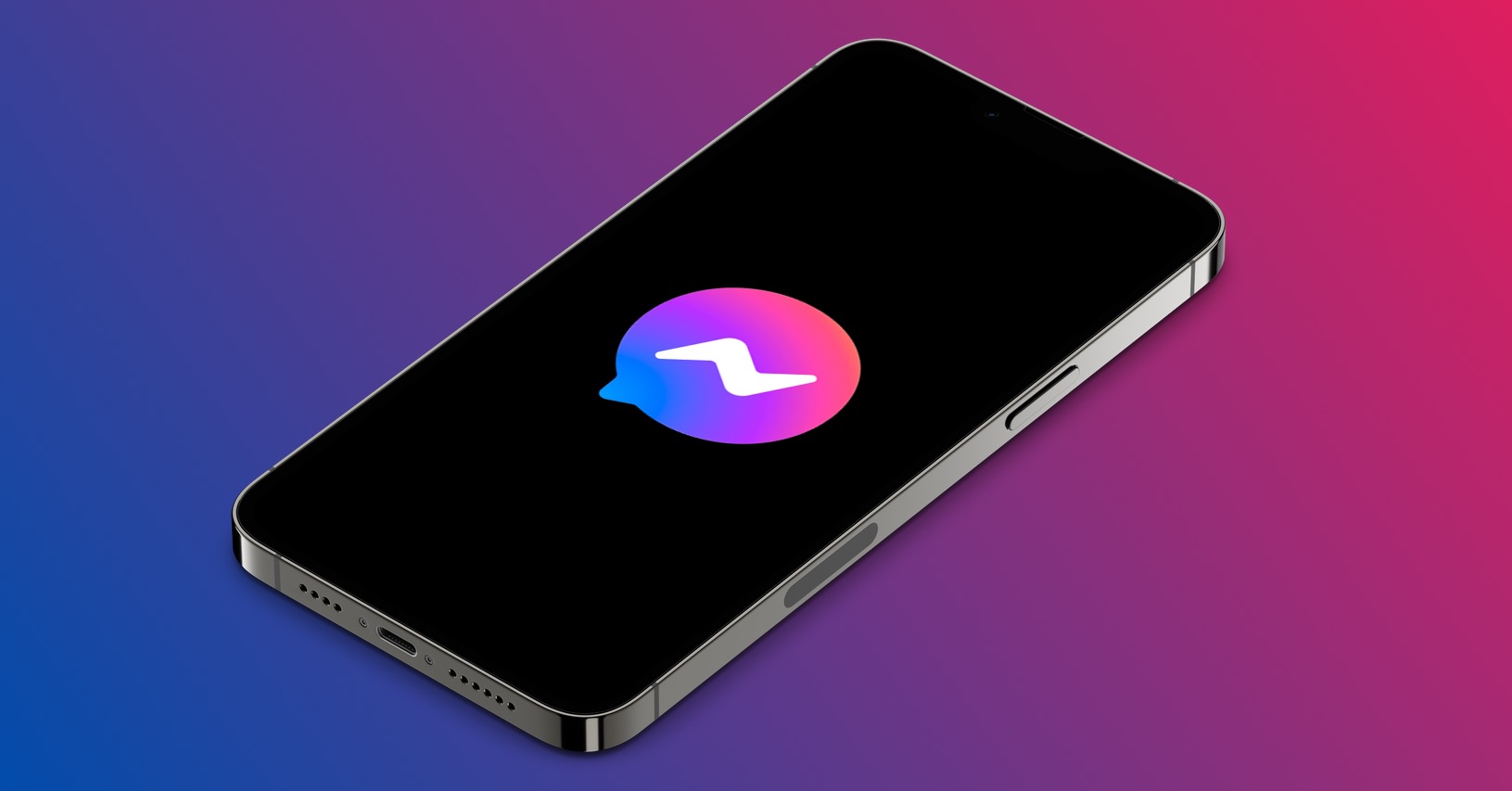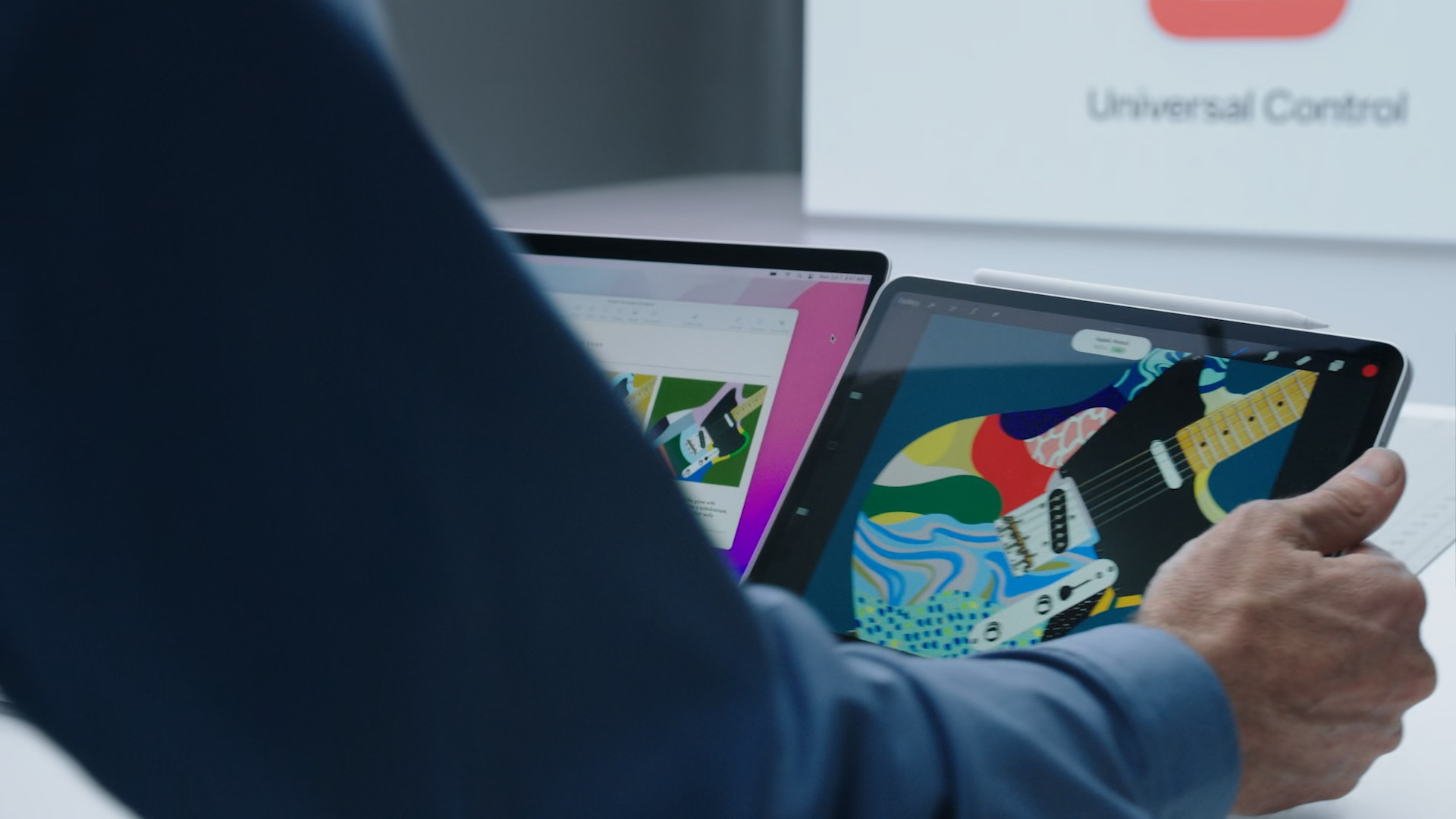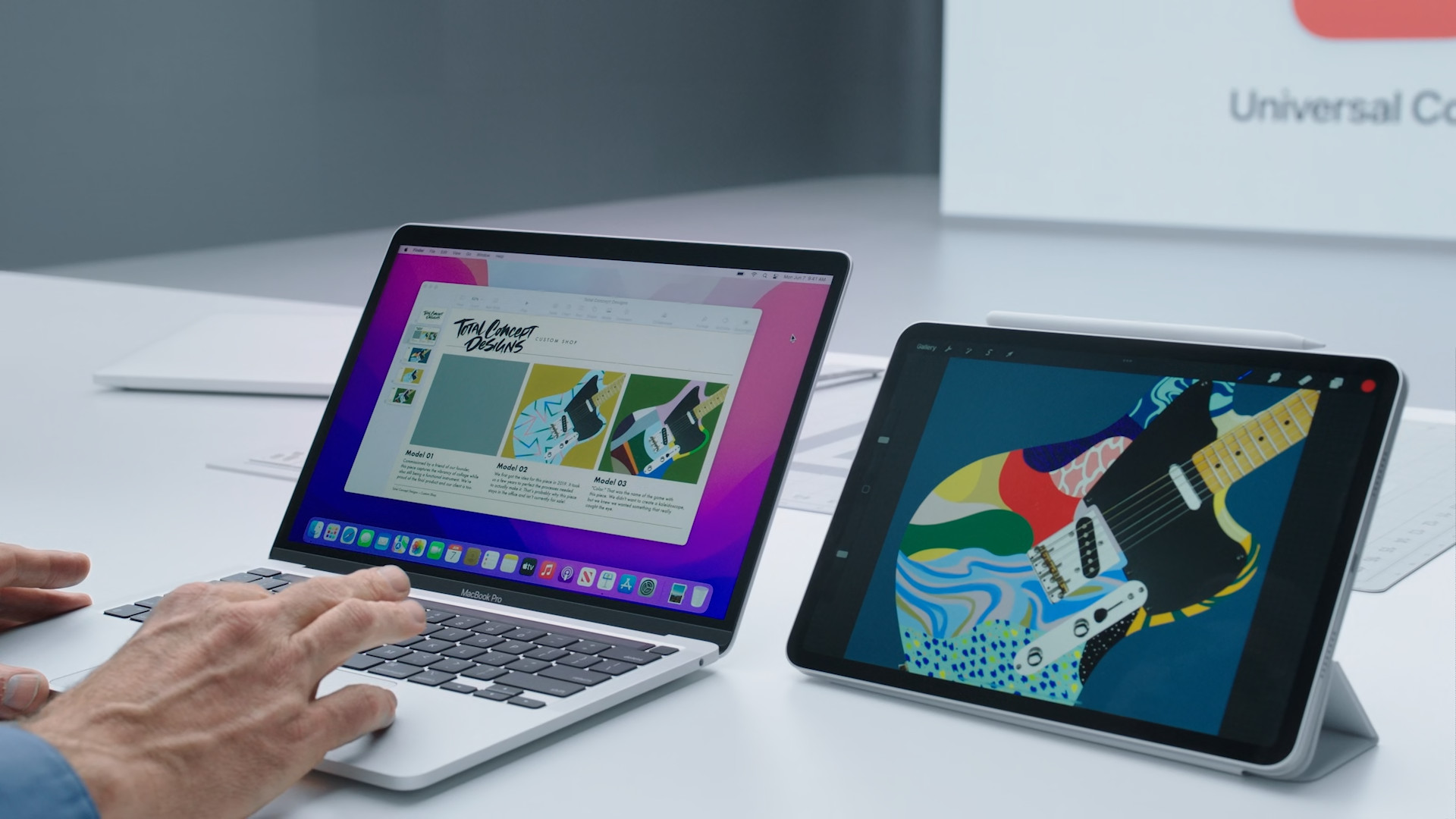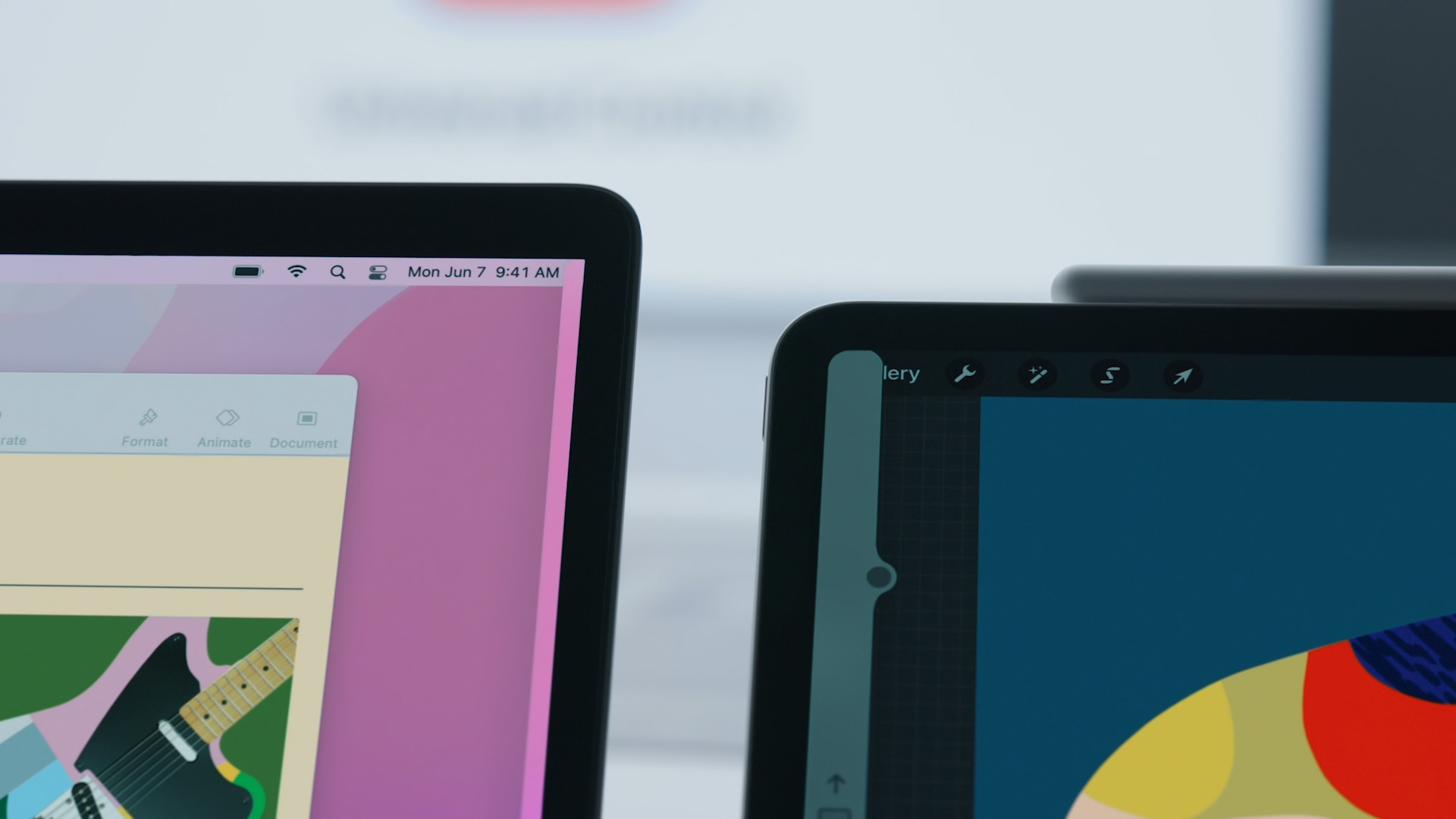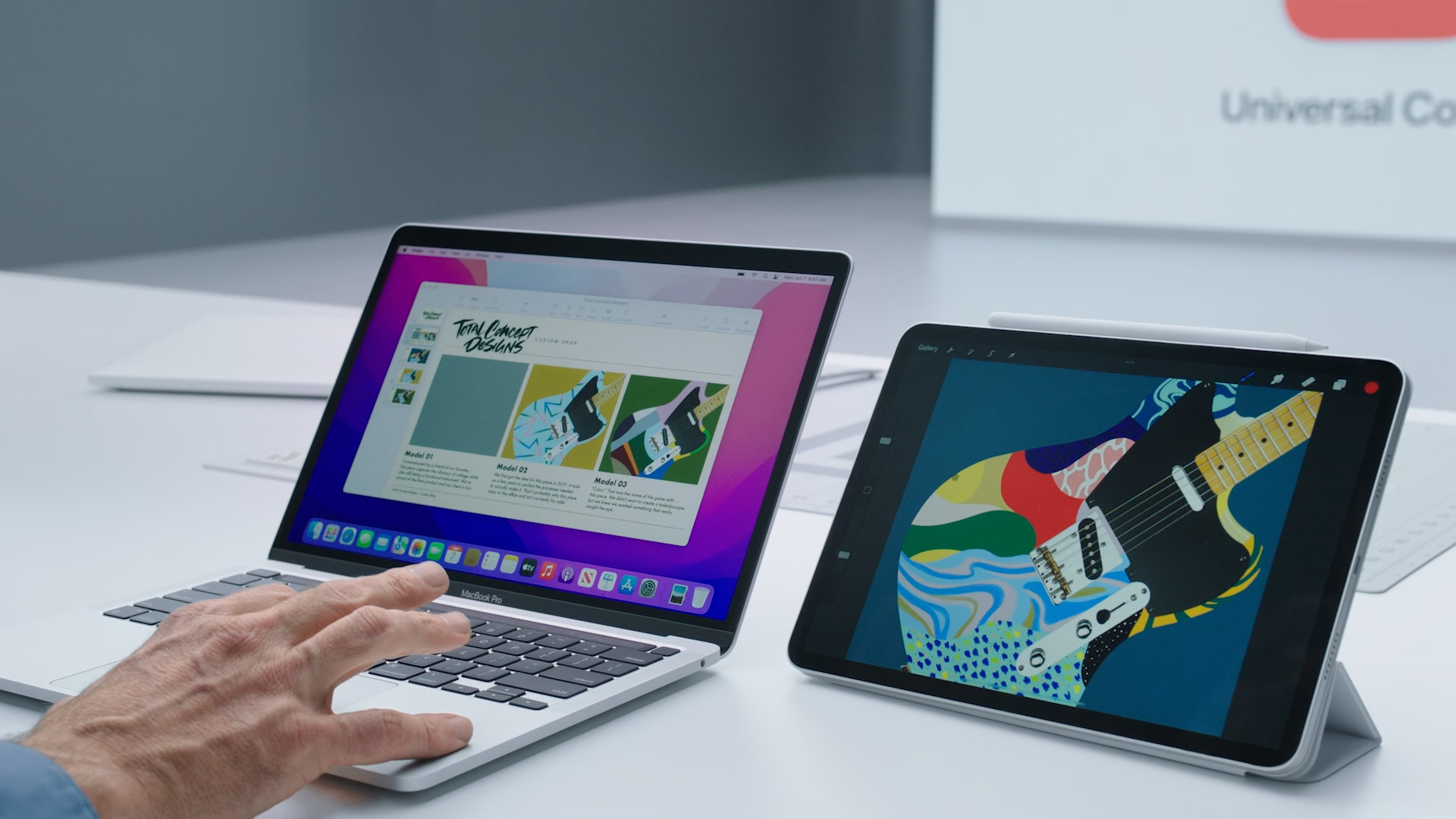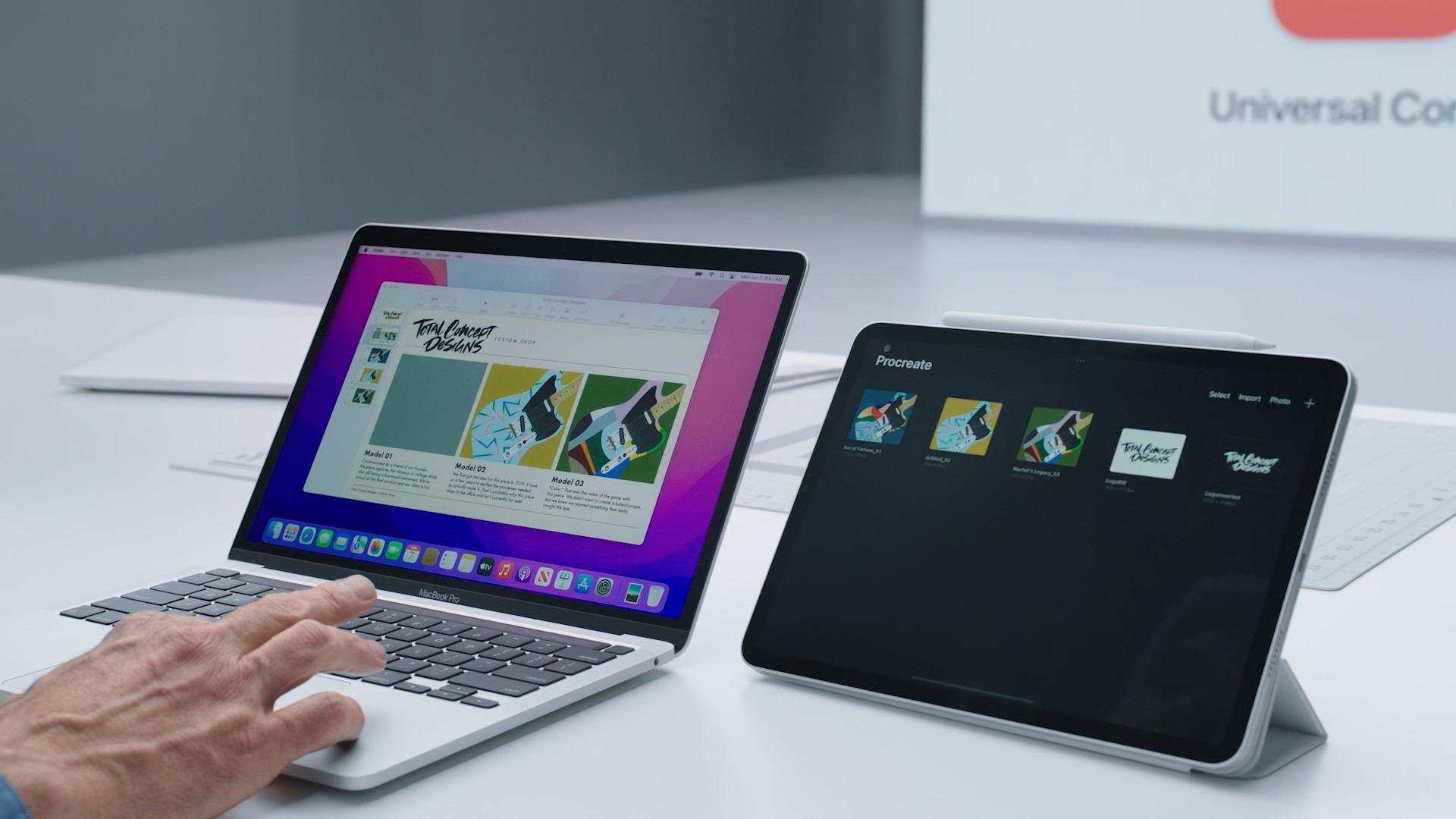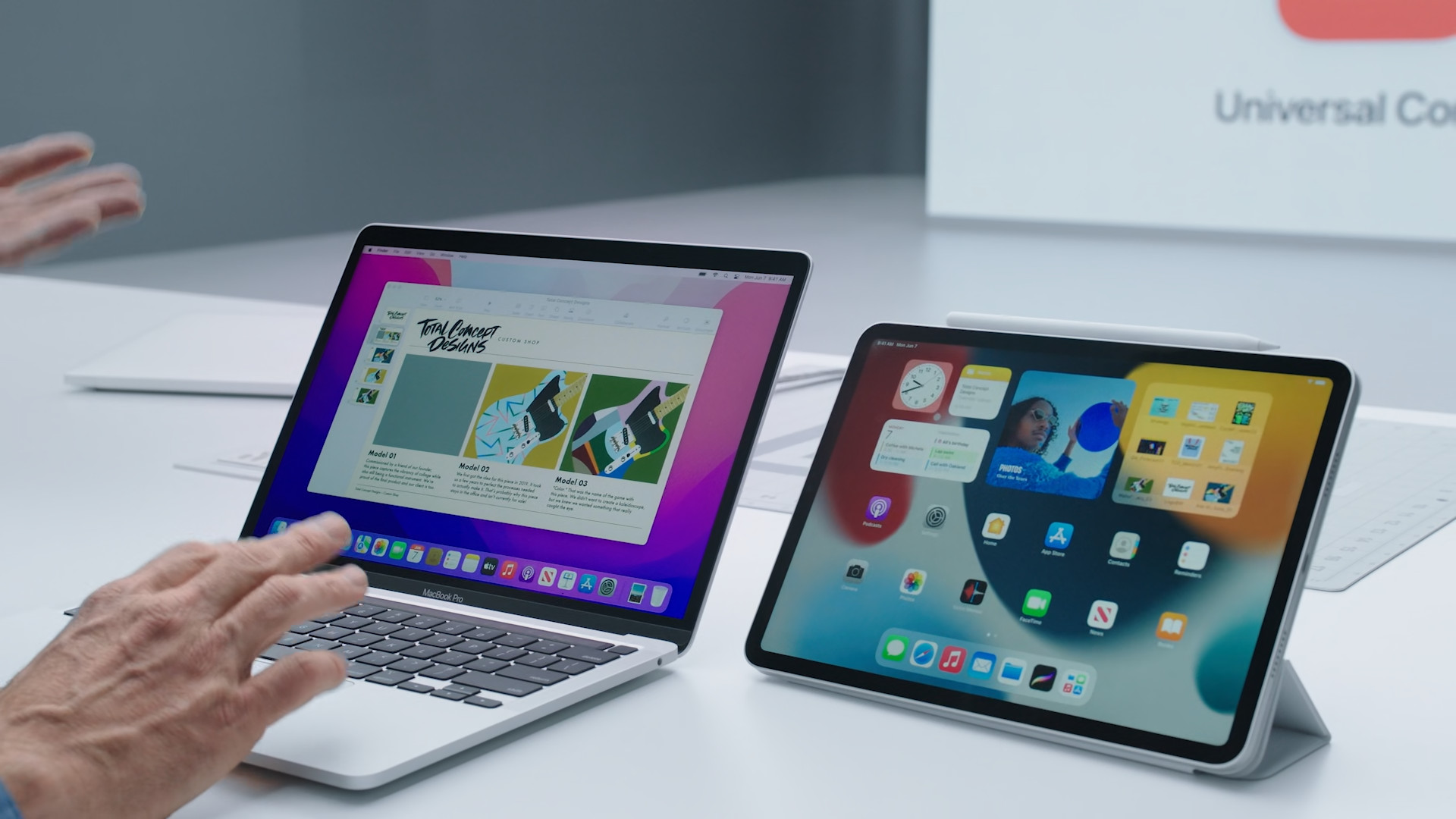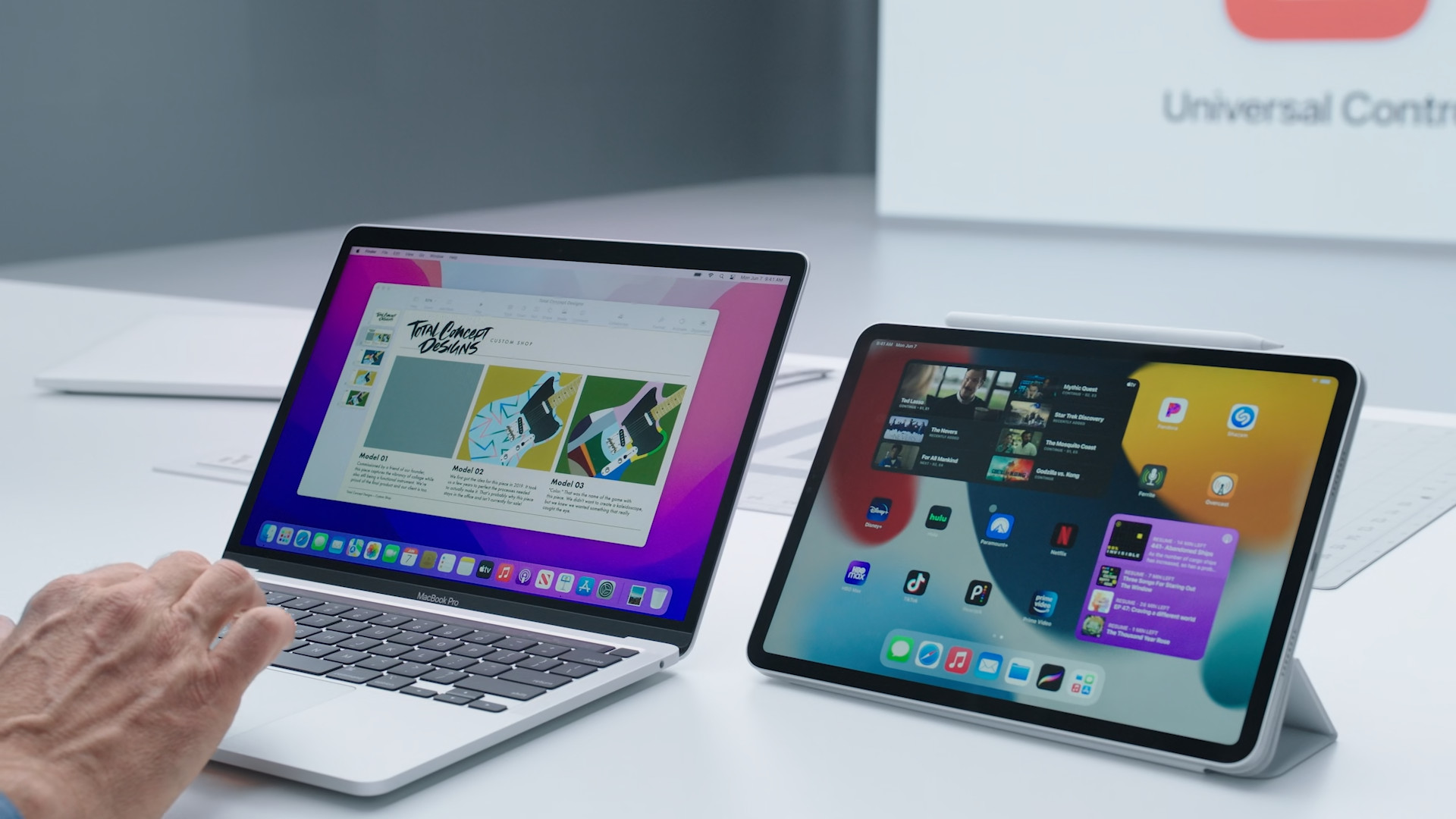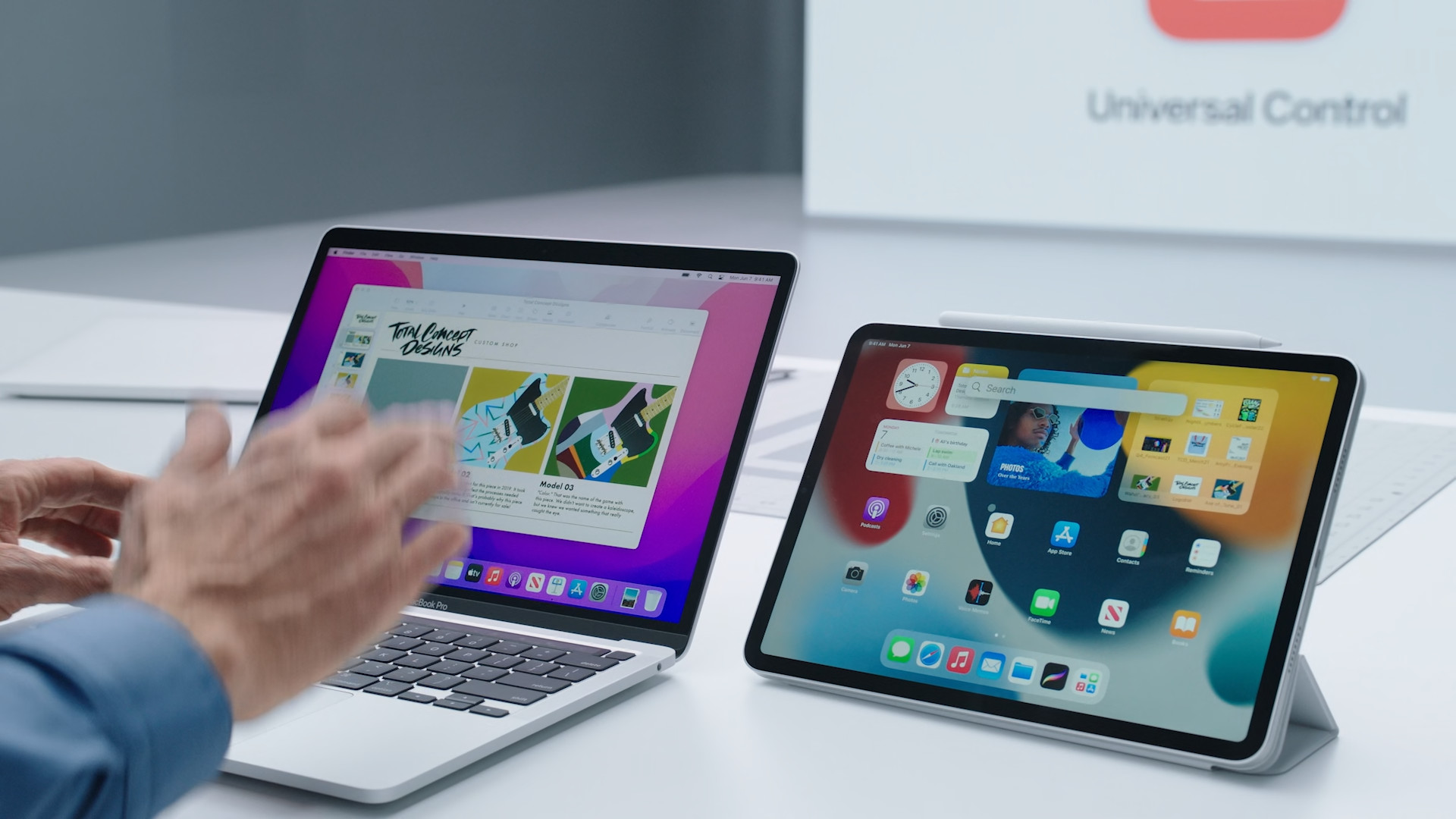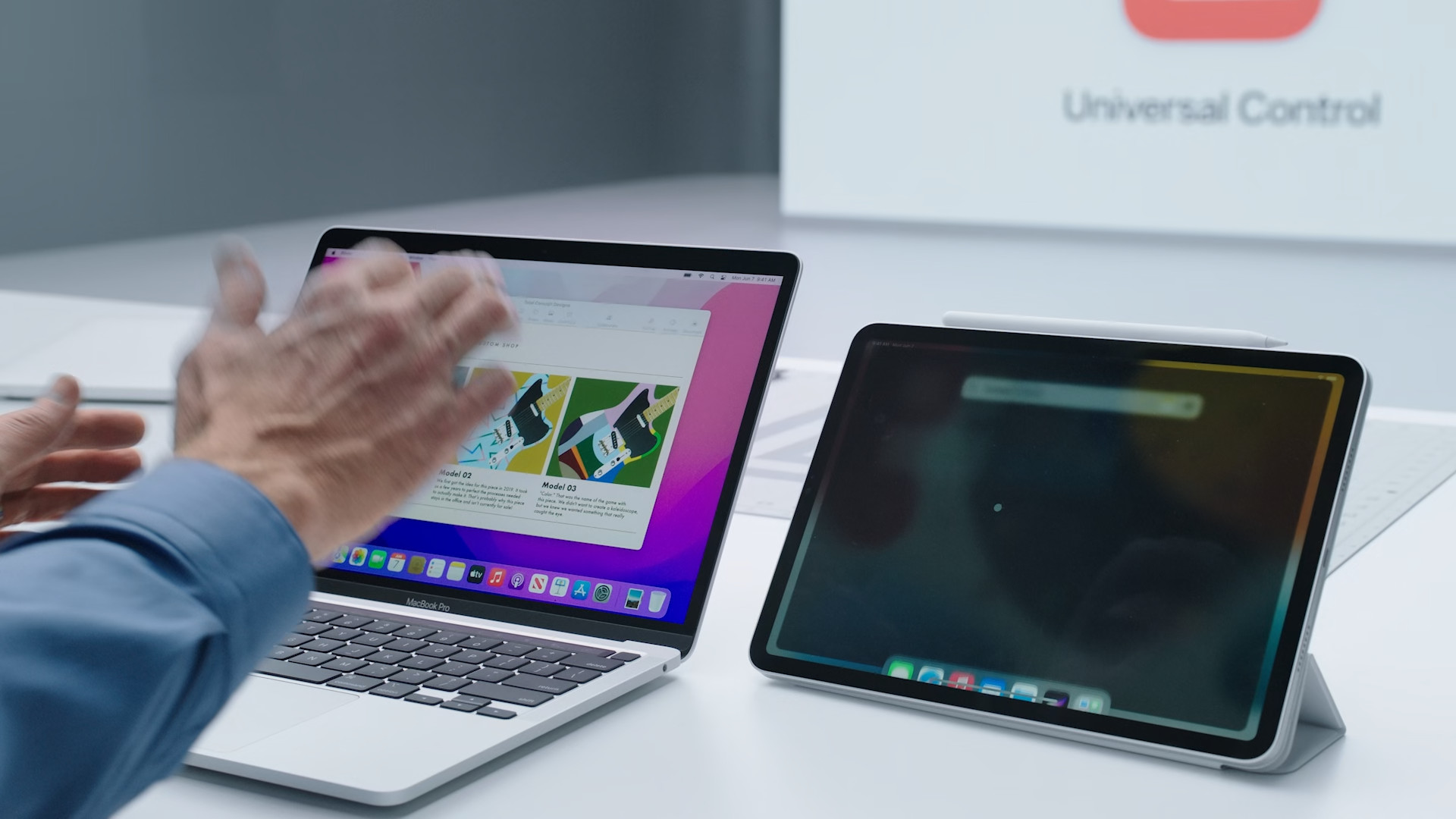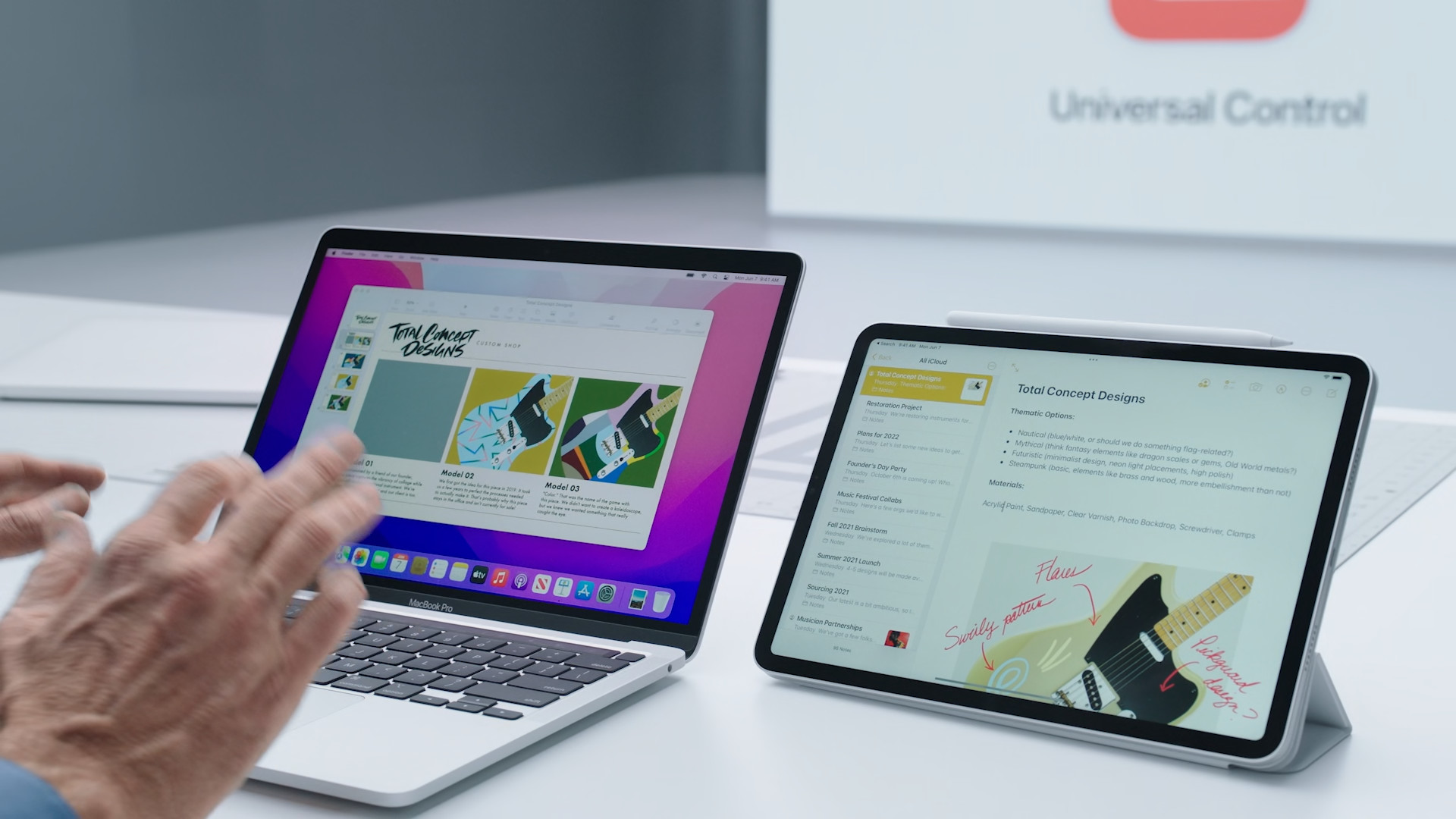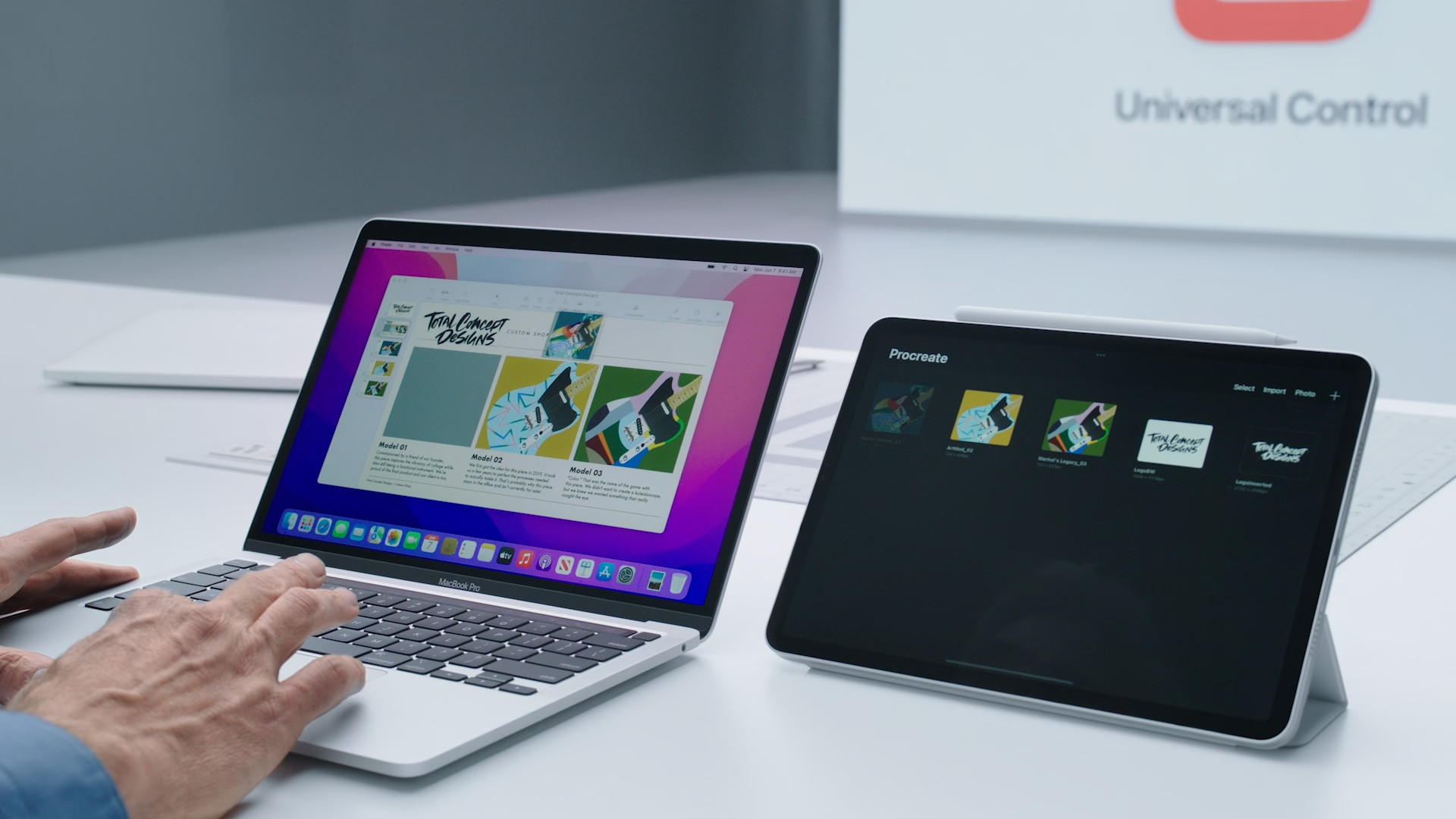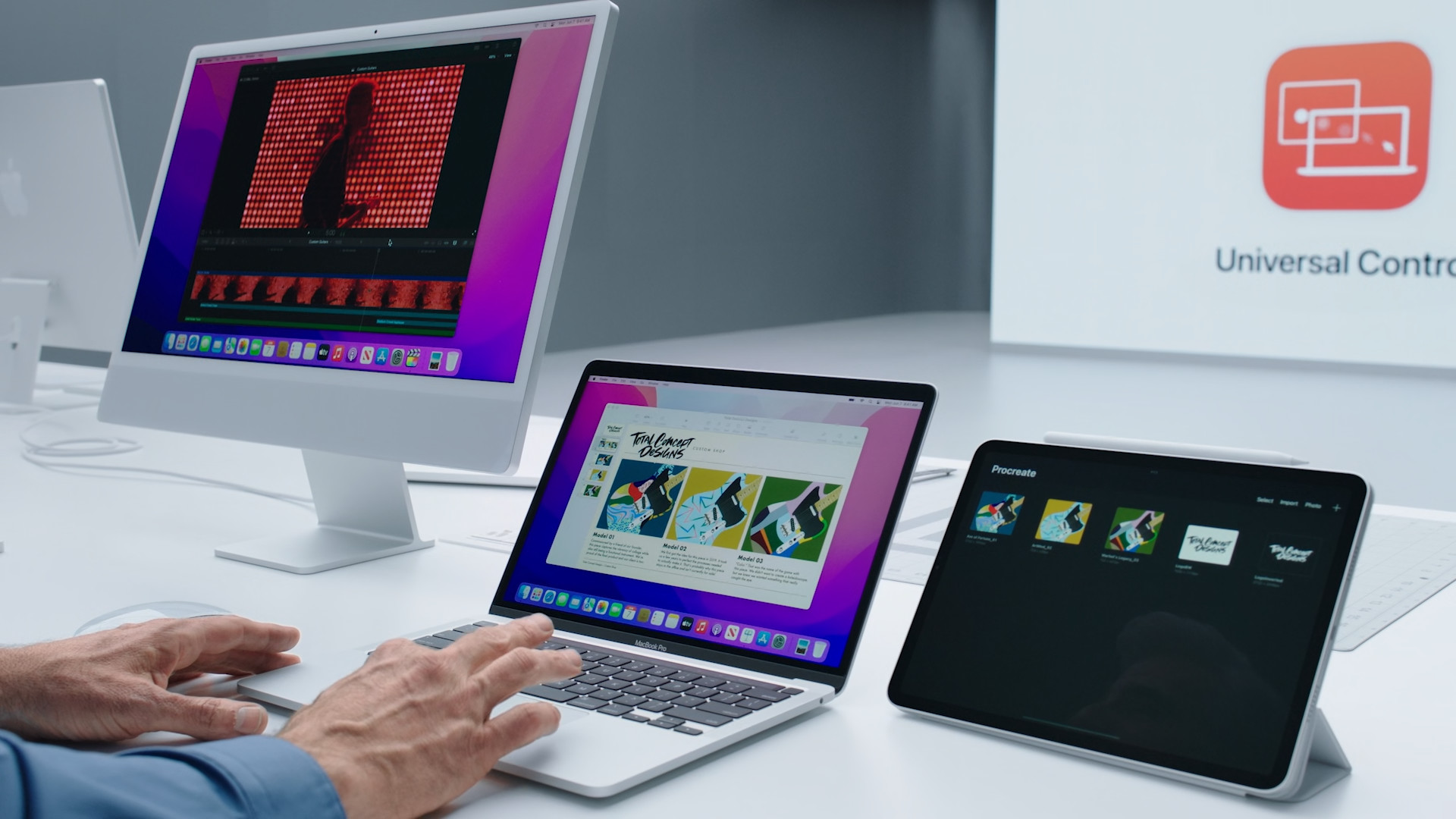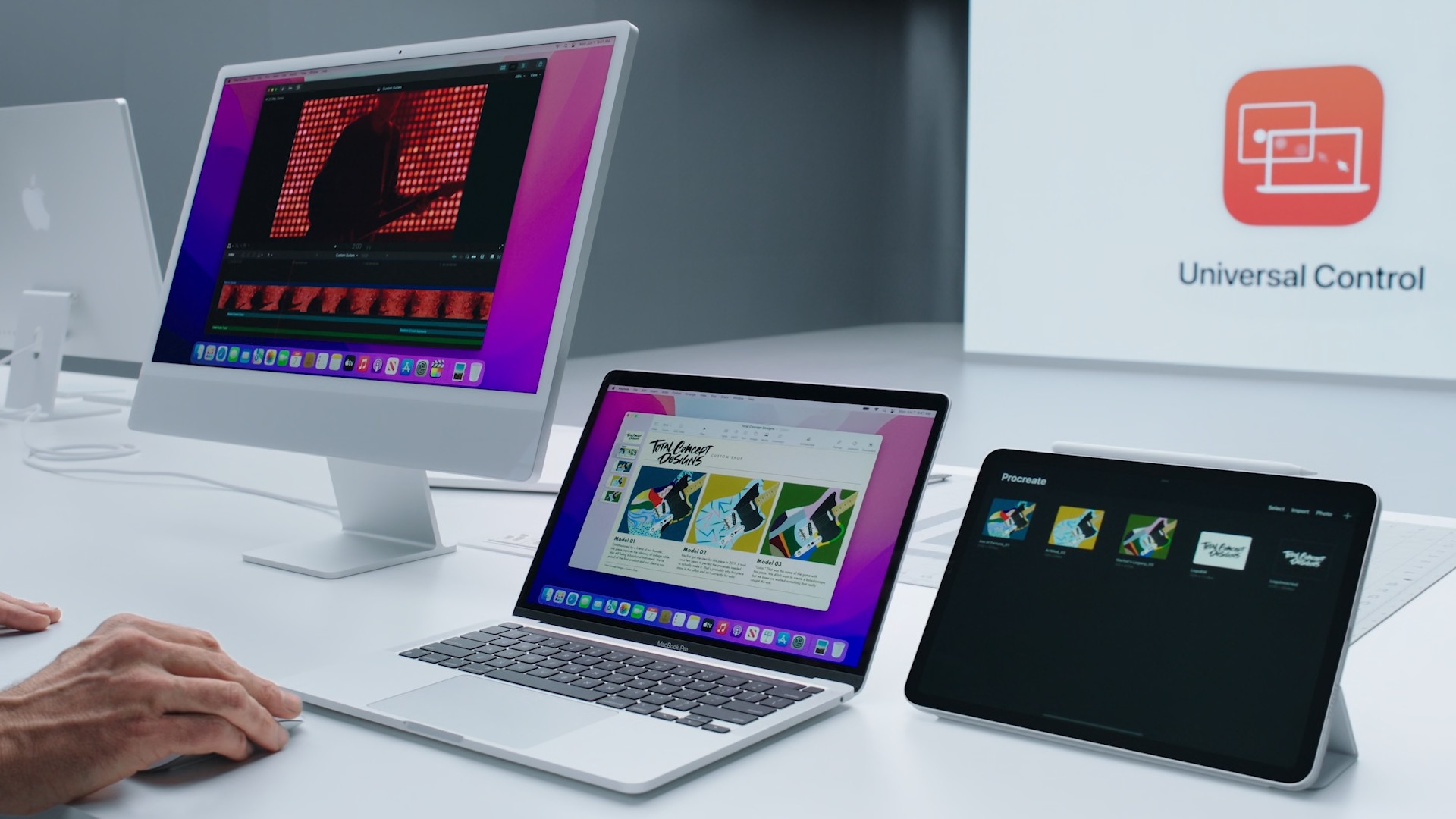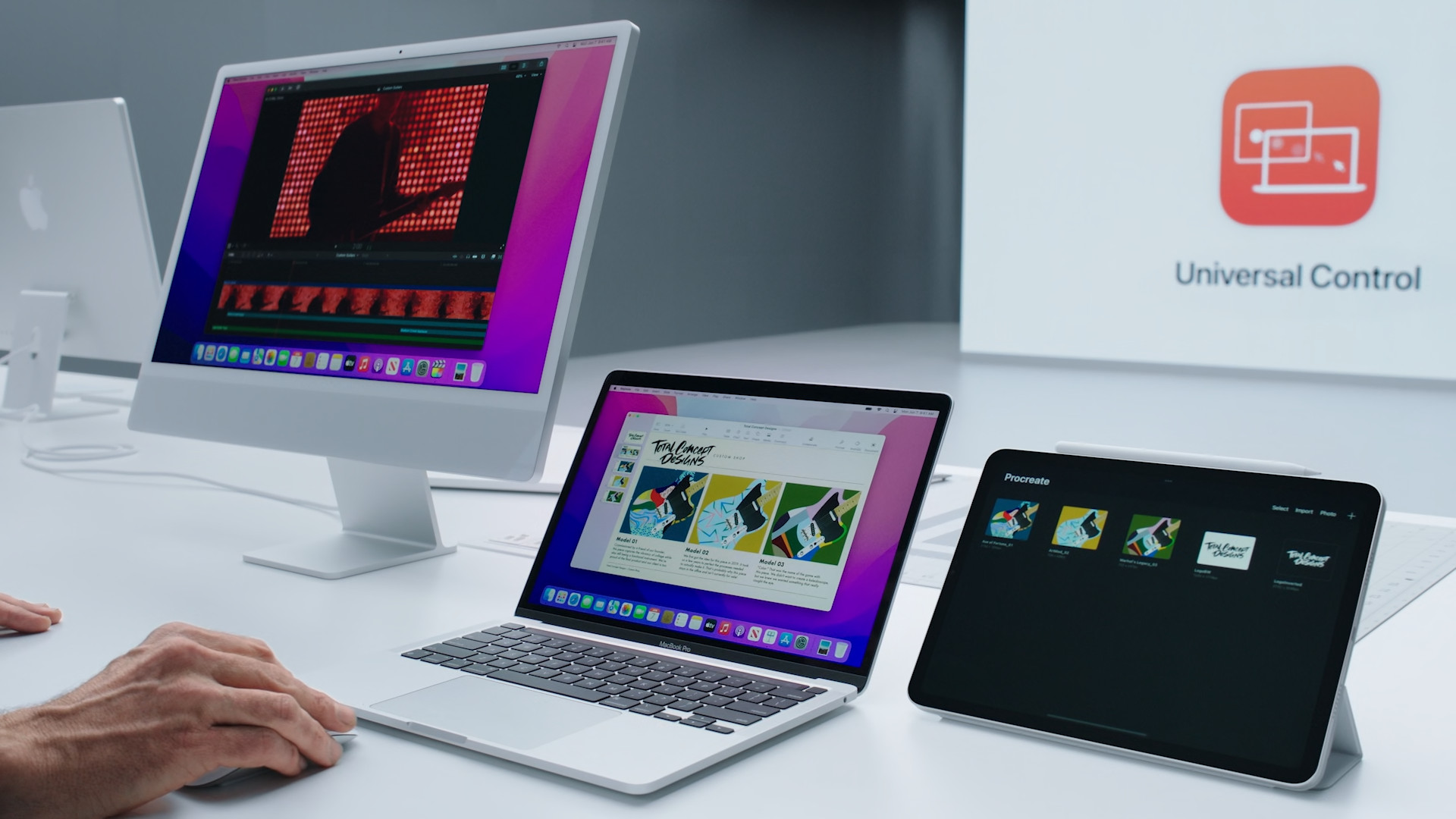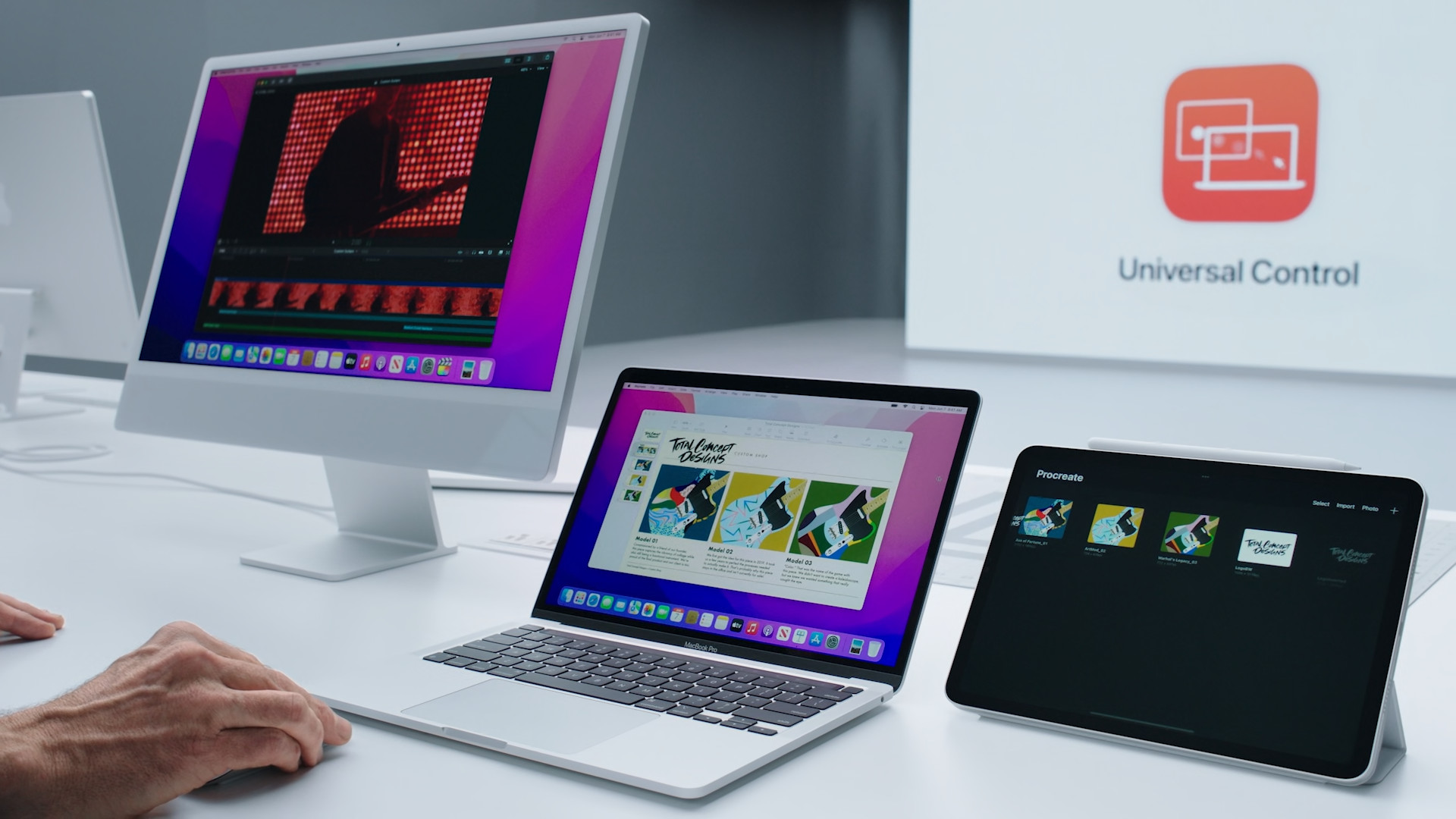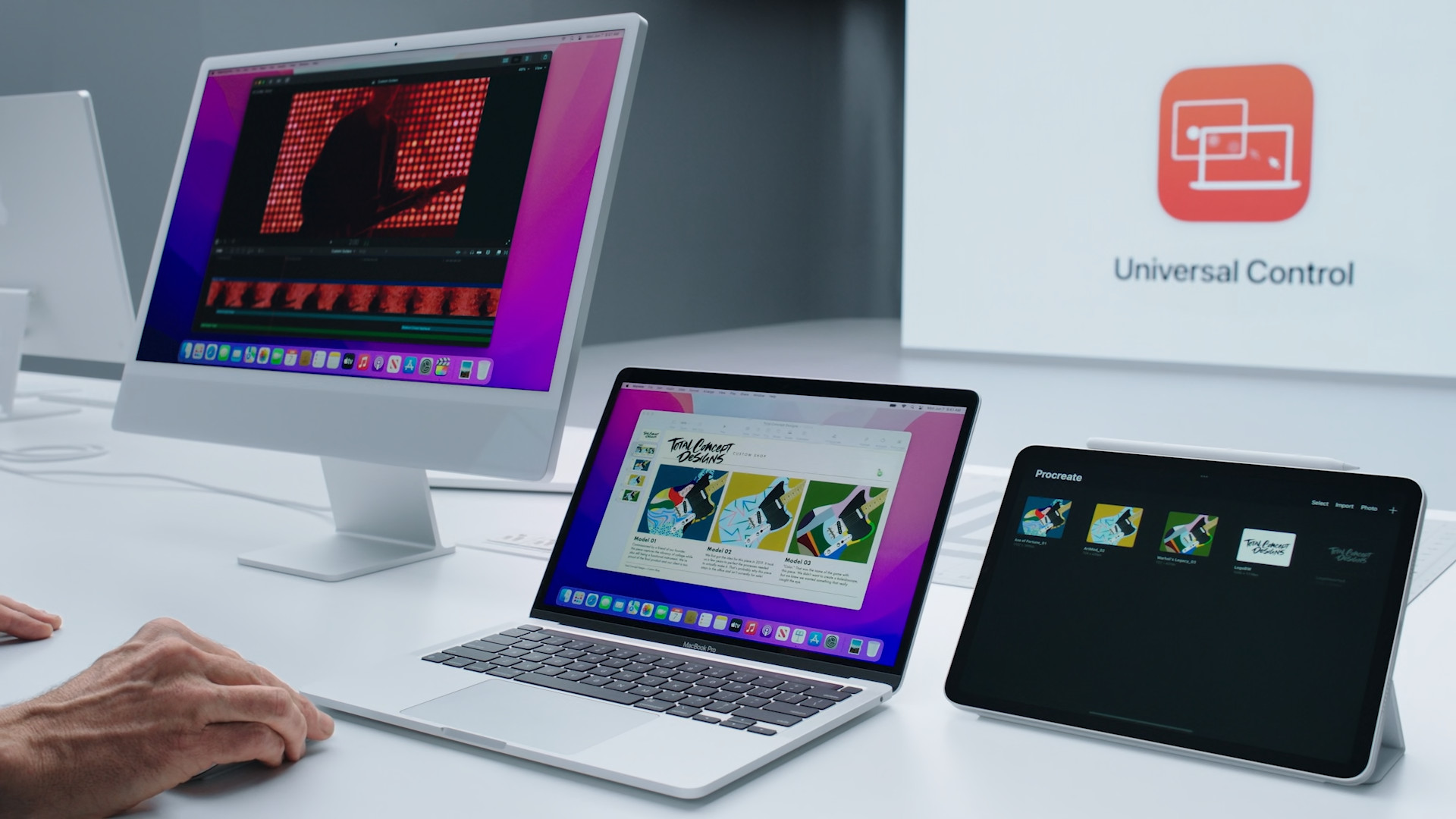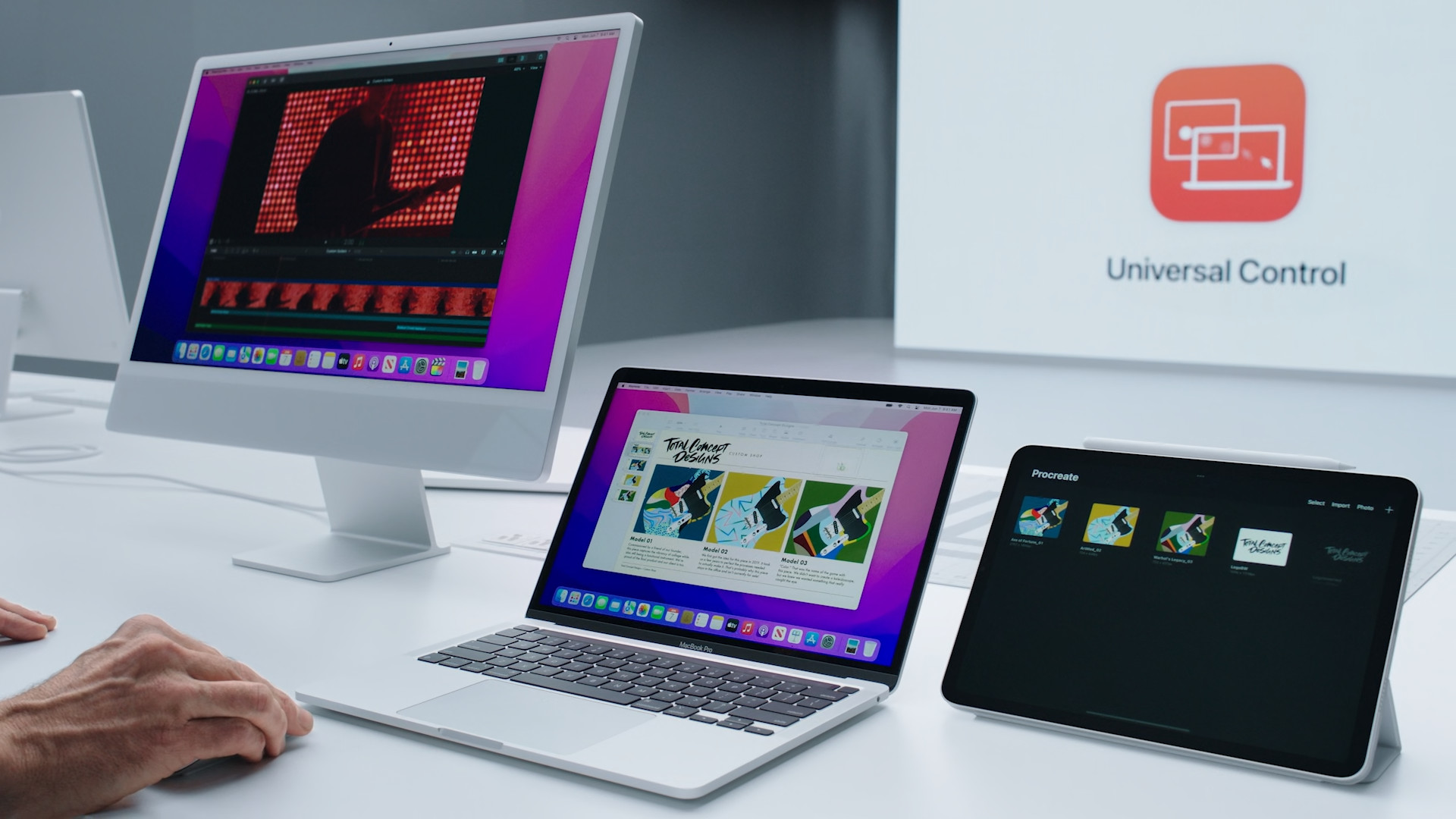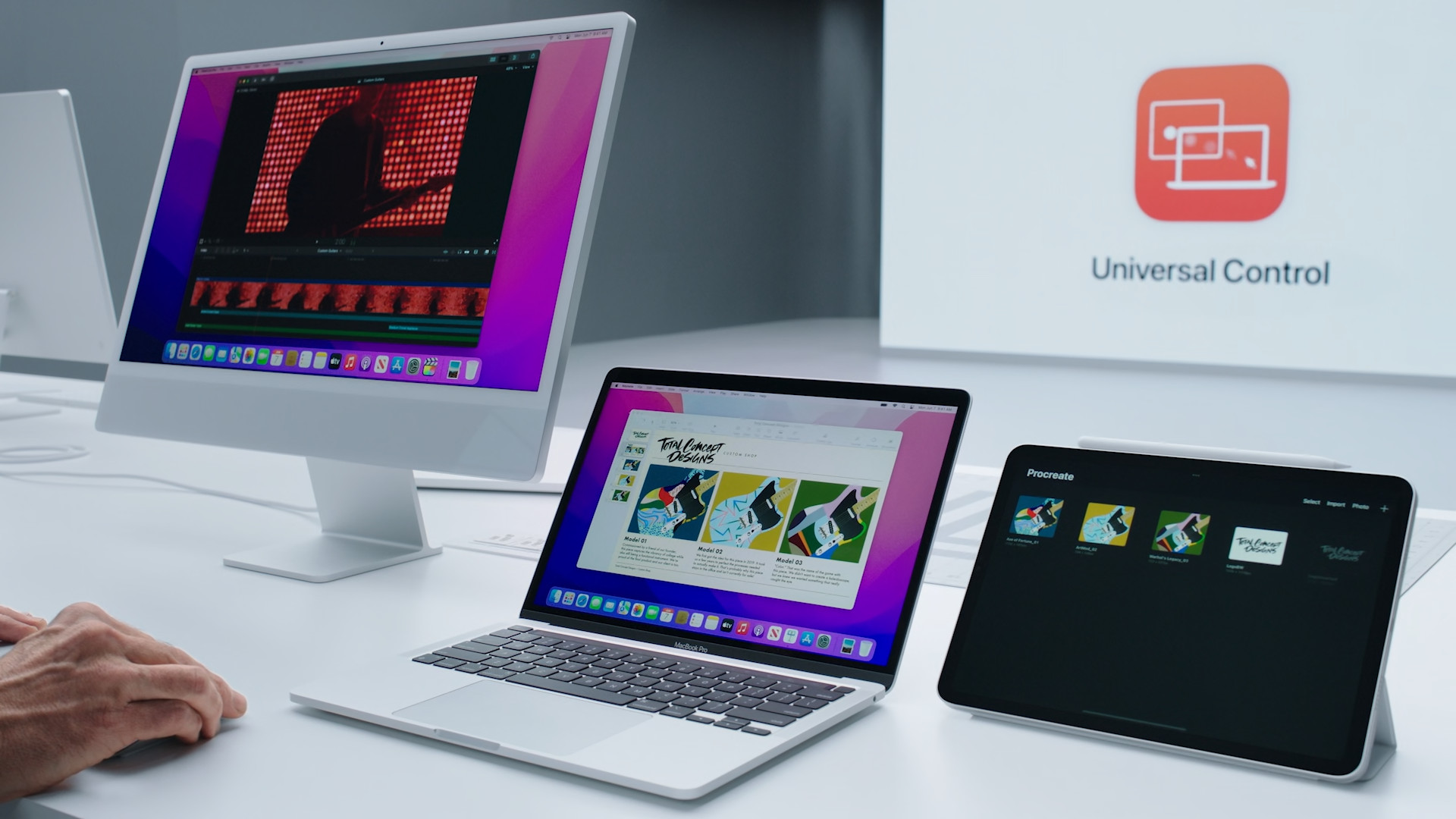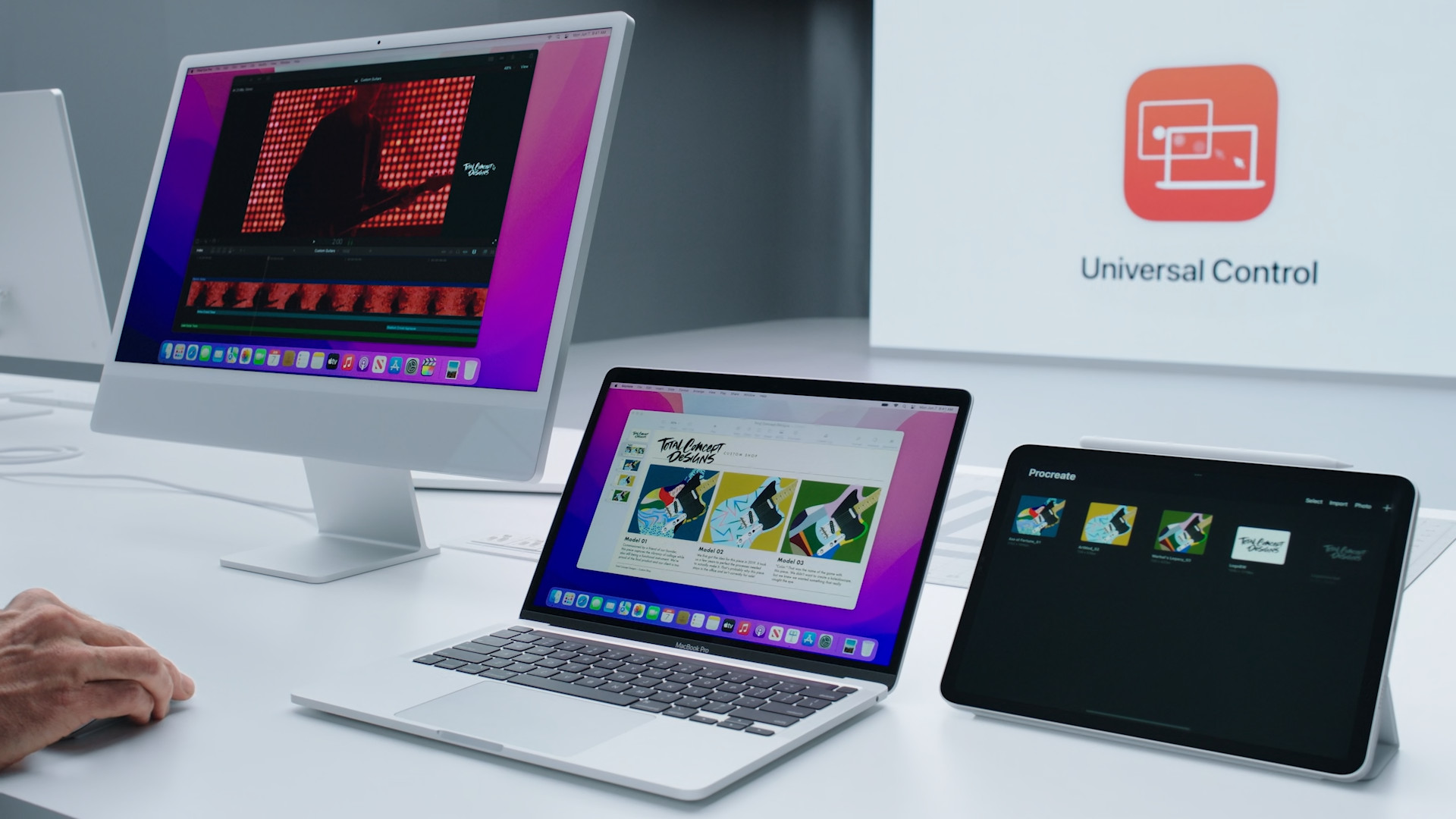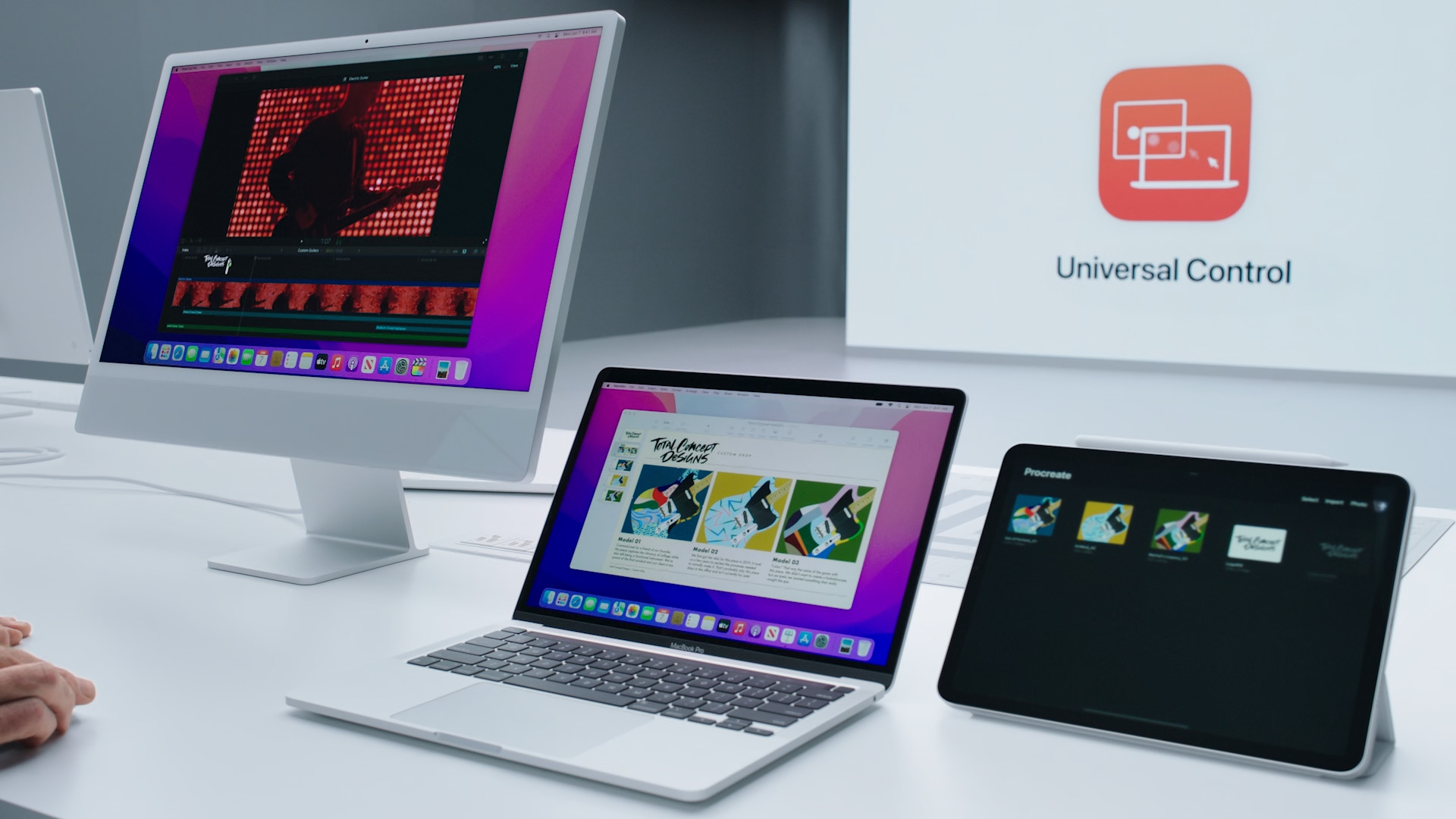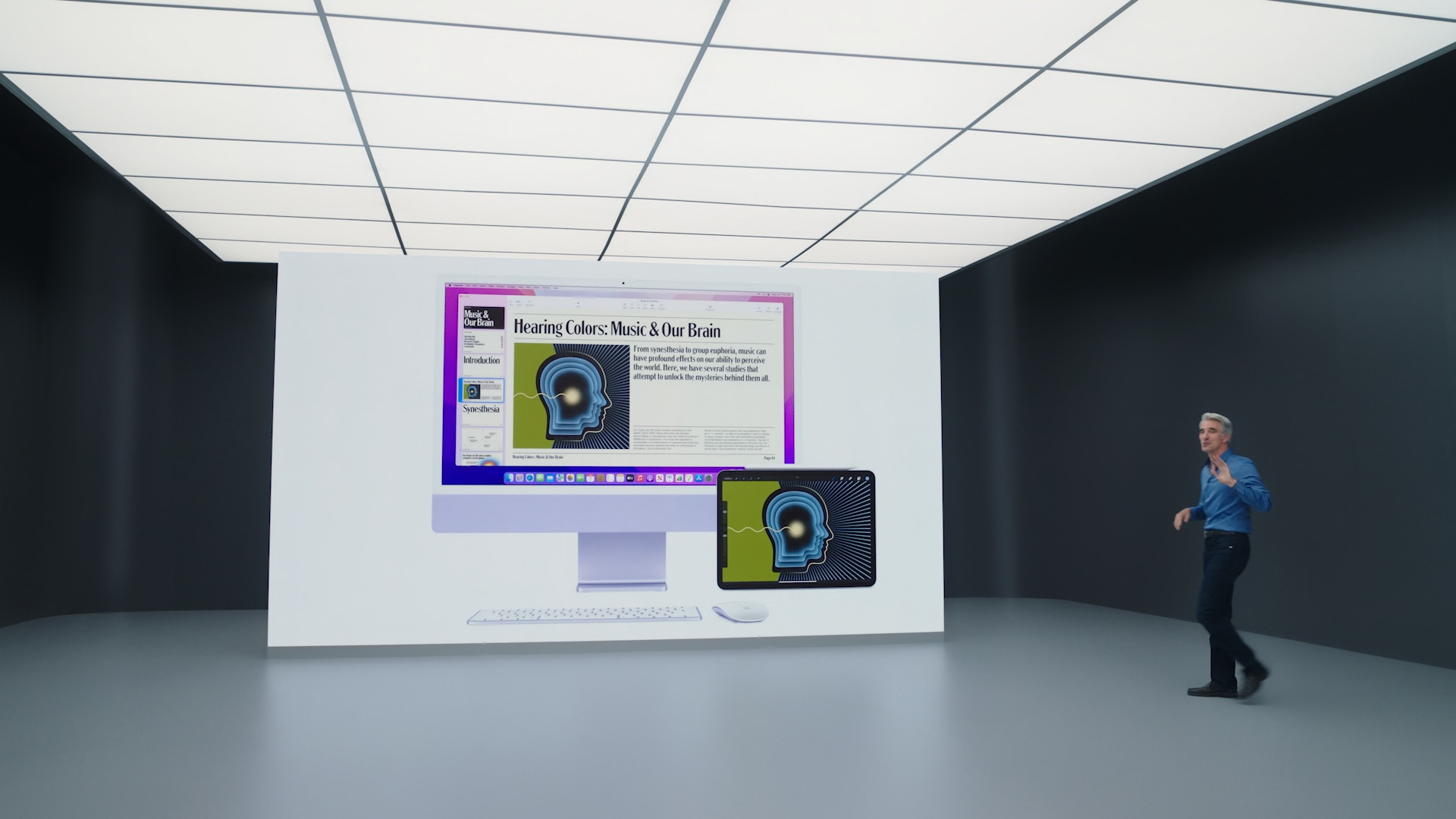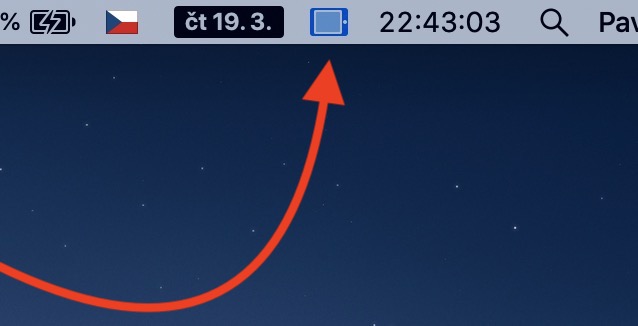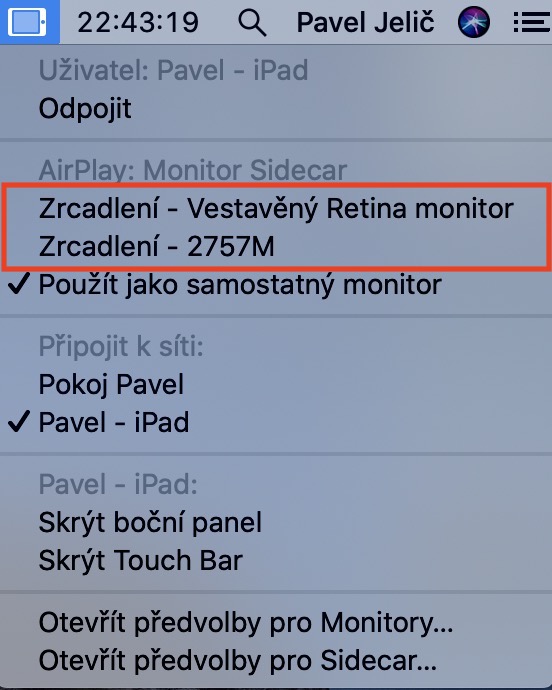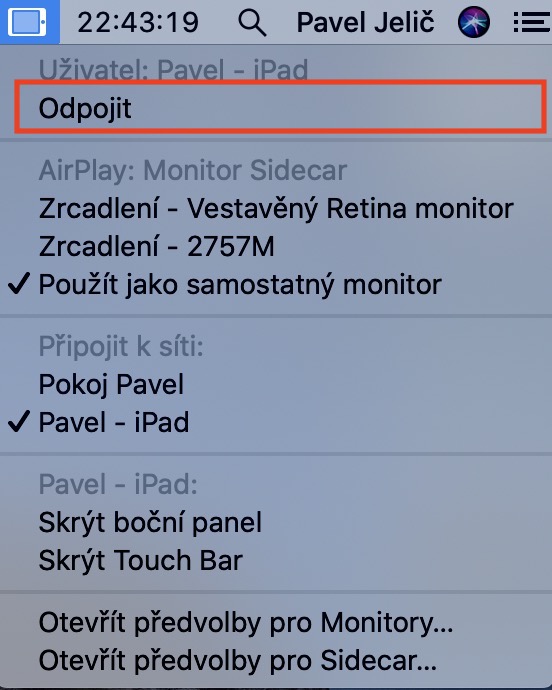When introducing the macOS 12 Monterey operating system, Apple managed to impress a large percentage of users with the Universal Control feature. This is a rather interesting gadget, thanks to which you can use, for example, one Mac, or one cursor and keyboard, to control several separate Macs and iPads. In addition, everything should work completely naturally and automatically, when it is enough to simply hit one of the corners with the cursor and you will suddenly find yourself on the secondary display, but directly in its system. It may slightly resemble the Sidecar feature from 2019. But there are quite significant differences between the two technologies and they are certainly not one and the same. So let's take a closer look at it.
It could be interest you
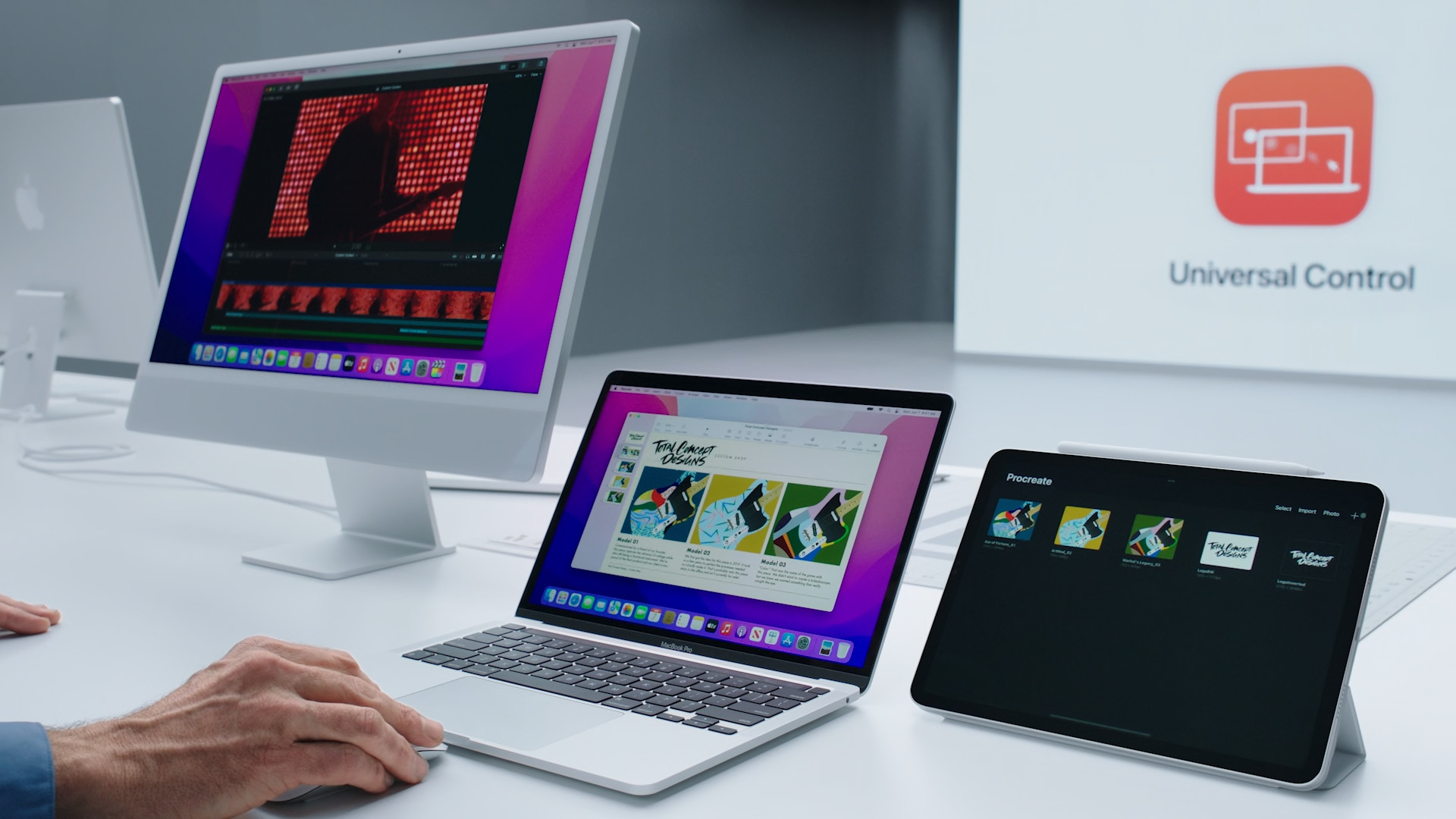
universal control
Although the Universal Control function was announced last June, specifically on the occasion of the WWDC 2021 developer conference, it is still missing in Apple operating systems. In short, Apple fails to deliver it in a sufficiently high-quality form. At first, there were mentions that the technology would arrive by the end of 2021, but that did not happen in the end. Anyway, hope has come now. As part of the latest beta versions of iPadOS 15.4 and macOS Monterey, Universal Control is finally available for testers to try out. And the way it looks so far, it's definitely worth it.
As we mentioned above, through the Universal Control function you can use one cursor and keyboard to control several of your devices. This way you can connect a Mac to a Mac, or a Mac to an iPad, and the number of devices is probably not limited. But it has one condition - the function cannot be used in combination between iPad and iPad, so it will not work without a Mac. In practice, it works quite simply. You can use the trackpad to move the cursor from your Mac to the side iPad and control it, or use the keyboard to type. However, this is not a form of content mirroring. On the contrary, you are moving to another operating system. This may have some imperfections in the combination of Mac and iPad as they are different systems. For example, you can't drag a photo from your Apple computer to your tablet without opening the Photos app on the tablet.
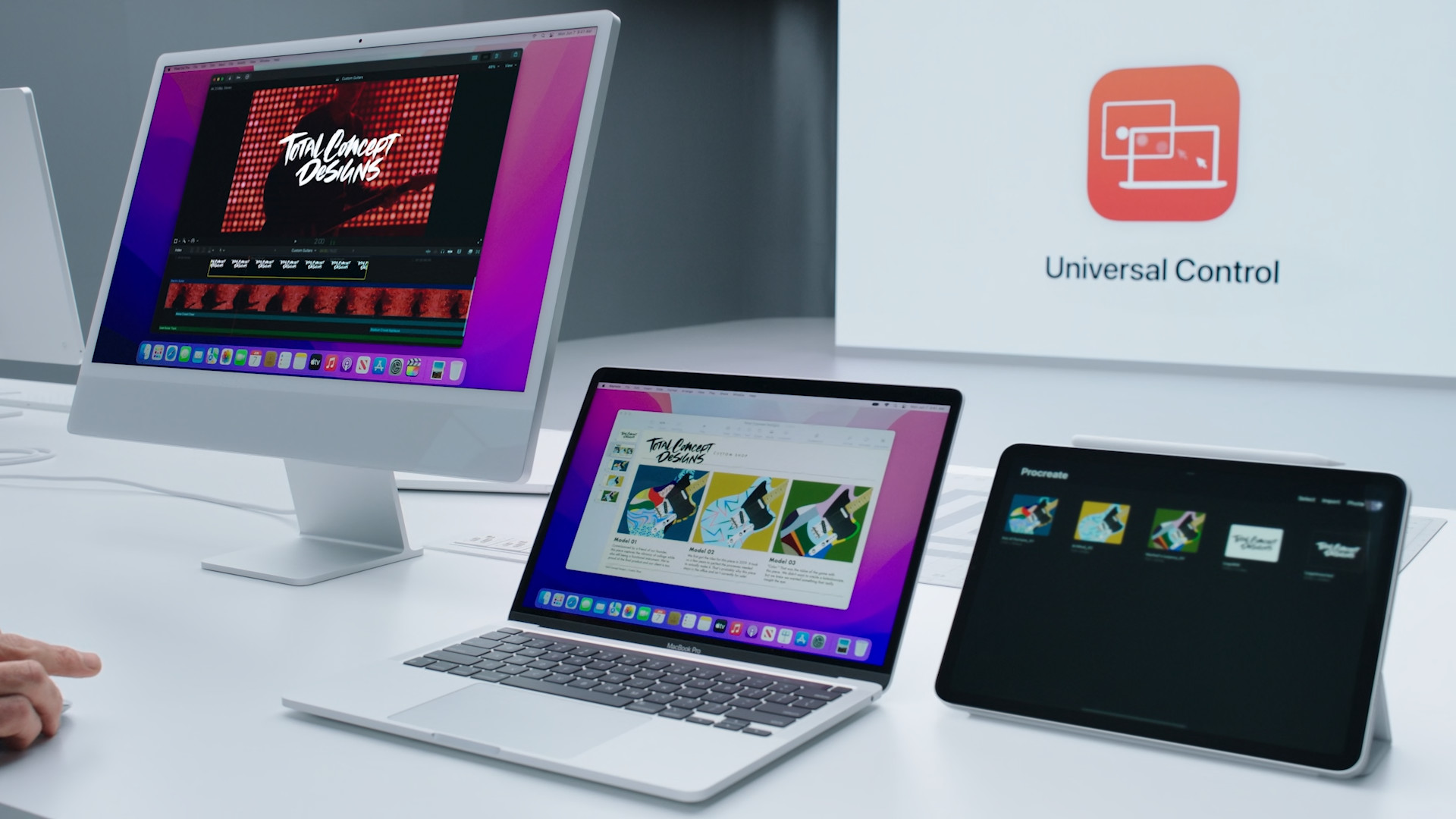
Although not everyone will use this technology, it can be a wish granted for some. Imagine a situation where you work on multiple Macs at the same time, or even an iPad, and you have to constantly move between them. This can be annoying and waste a lot of time just moving from one device to another. Instead of Universal Control, however, you can sit quietly in one place and control all products from, for example, your main Mac.
Sidecar
For a change, Sidecar technology works a little differently and its purpose is completely different. While with Universal Control several devices can be controlled via one device, Sidecar, on the other hand, is used to expand only one device. In that case, you can specifically turn your iPad into a mere display and use it as an additional monitor for your Mac. The whole thing works exactly the same as if you decided to mirror content via AirPlay to Apple TV. In that case, you can either mirror the content or use the iPad as the already mentioned external display. During this, the iPadOS system goes completely into the background, of course.
Although it may sound boring compared to Universal Control, get smarter. Sidecar offers an amazing feature, which is support for the apple stylus Apple Pencil. You can use it as an alternative to the mouse, but it also has better uses. In this, Apple specifically targets, for example, graphics. In this case, you can mirror, for example, Adobe Photoshop or Illustrator from Mac to iPad and use Apple Pencil to draw and edit your works, thanks to which you can practically turn your Apple tablet into a graphics tablet.
Function settings
The two technologies also differ in the way they are set up. While Universal Control works quite naturally without the need to set anything up, in the case of Sidecar you have to choose every time that the iPad is used as an external display at a given moment. Of course, there are also options for settings in the case of the Universal Control function, which you can adapt to your needs, or disable this gadget completely. The only condition is that you have the devices registered under your Apple ID and within 10 meters.
It could be interest you
